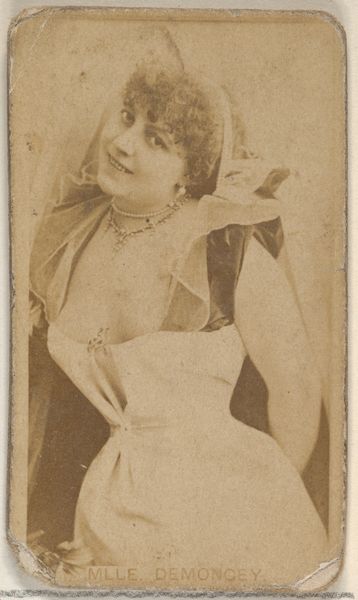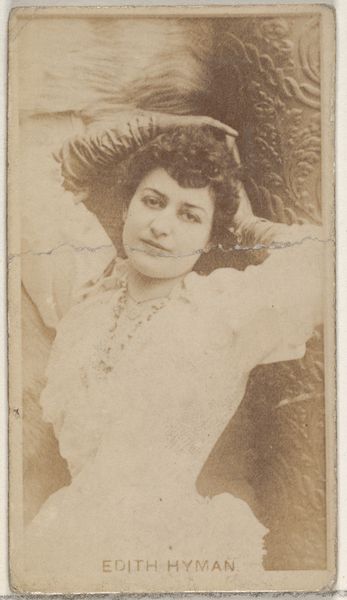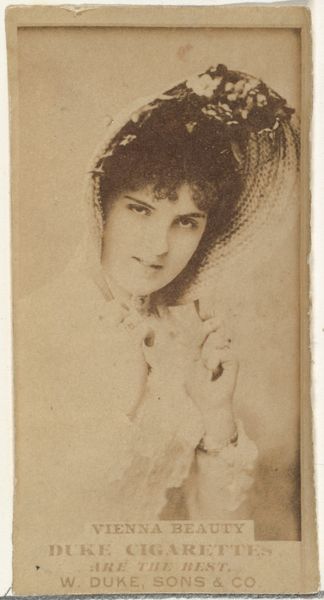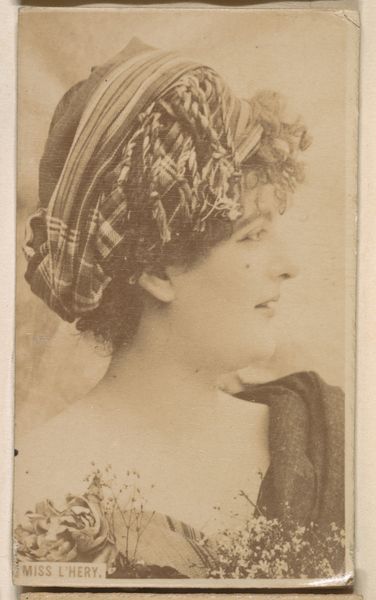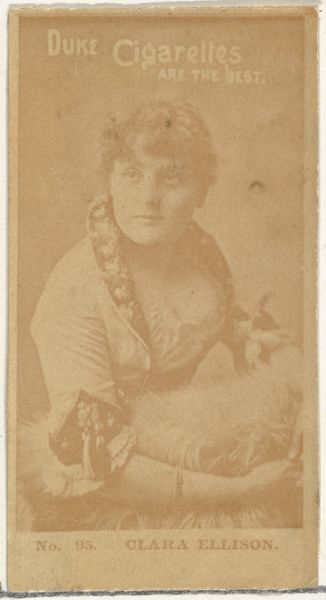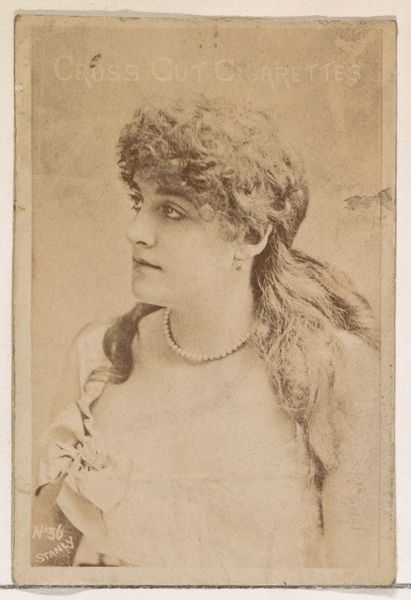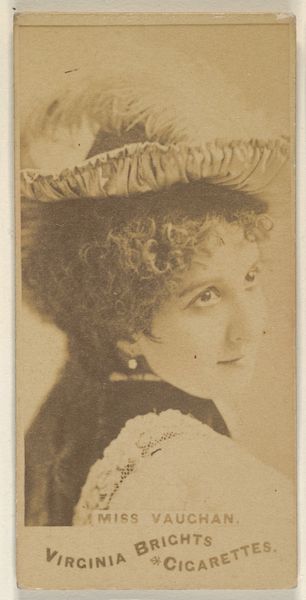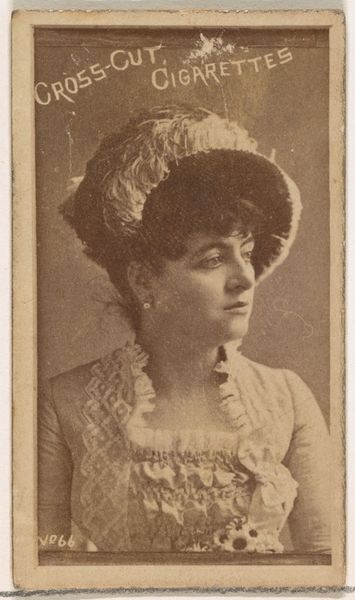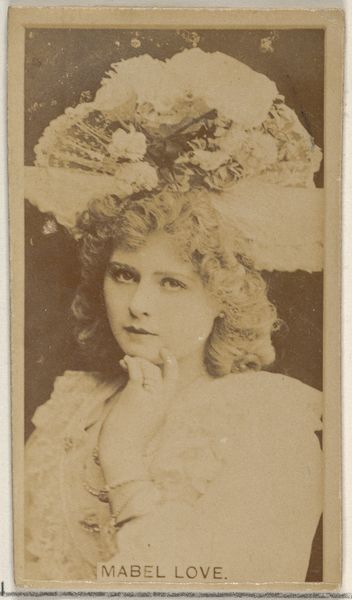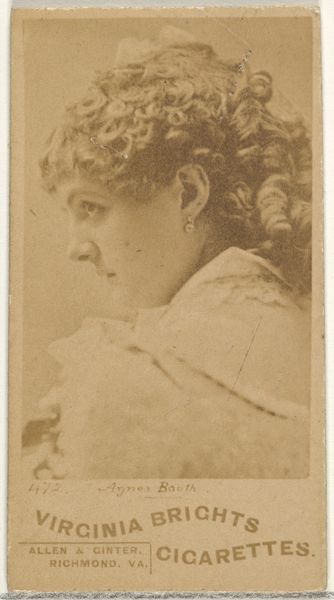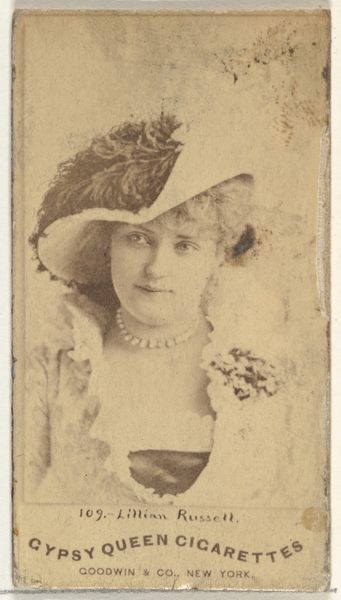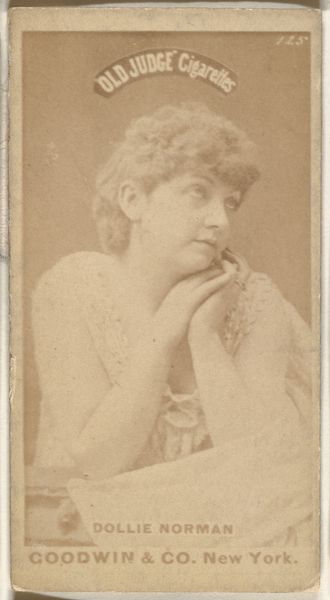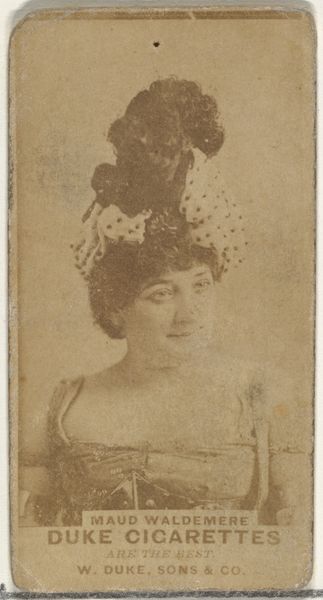
Marion Roberts, from the Actresses series (N246), Type 2, issued by Kinney Brothers to promote Sporting Extra Cigarettes 1888 - 1892
0:00
0:00
print, photography, collotype
#
portrait
#
pictorialism
# print
#
photography
#
collotype
Dimensions: Sheet: 3 1/16 × 2 7/8 in. (7.7 × 7.3 cm)
Copyright: Public Domain
Curator: Look at this fascinating piece. It's a collotype print from around 1888-1892, a portrait of Marion Roberts, an actress. The image is part of the "Actresses series" (N246), produced by Kinney Brothers Tobacco Company as a promotional item for Sporting Extra Cigarettes. Editor: My initial reaction is charm! The lighting, soft focus, and sepia tones give it such a romantic, almost dreamlike quality. It feels so distant, and yet the woman's smile brings it right back into a friendly familiarity. Curator: That's a great observation. The collotype process really lends itself to that ethereal effect, softening the details while preserving a striking likeness. Think about the cultural associations—theatrical portraiture like this one helped build and reinforce celebrity during a pivotal era. Editor: Absolutely. The choice of collotype speaks volumes about accessibility, too. This wasn't a piece meant for gallery walls initially. The tobacco company democratized it by inserting it into cigarette packs; they understood its currency, it could be literally consumed. It's all about the mass production and distribution of desire. Curator: The actress's bonnet—the delicate lace patterns—and that feather flourish contribute to this image's constructed appeal. Remember the semiotic power of the cigarette in those years. It signified sophistication, independence, and modern aspiration; the tobacco companies chose women celebrities deliberately. The cigarette was being introduced to women for the first time during the late nineteenth century! Editor: You're so right. These small tokens created these mass manufactured representations, connecting tangible products with the aspirations of audiences who were hungry for the illusion of access to the lives of stars, reinforcing specific notions about class, status, and even gender roles. A clever commodification of artistry and aspiration. Curator: In that respect, analyzing such an artifact from the Gilded Age offers insights beyond surface beauty; you begin to see it as an embodiment of emerging trends. Editor: I agree. Studying its tangible production context illuminates a web of relations around fame, labor, and desire at a really potent moment in modern history. These ephemeral fragments carry the echoes of significant historical changes.
Comments
No comments
Be the first to comment and join the conversation on the ultimate creative platform.
